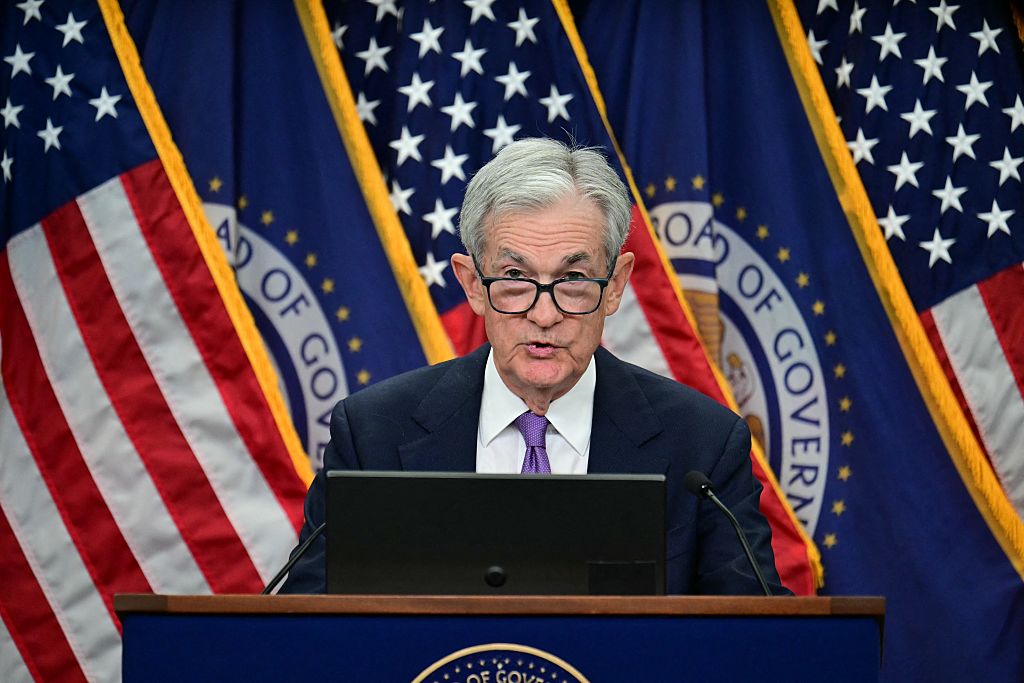What 'New Normal?' El-Erian's Pimco Fund Falls Flat
He and Bill Gross make up the most formidable pair of bond investors in the world. But El-Erian hasn’t had much success running Global Multi-Asset Fund

Five years ago, in the depths of the financial meltdown, bond powerhouse Pimco launched a diversified fund designed to produce solid returns and to protect investors against severe market downturns. Mohamed El-Erian, Pimco’s co-chief investment officer, has been the fund’s lead manager since its inception in 2008.
Pimco Global Multi-Asset D (symbol PGMDX) was tailor-made for the “new normal,” a term that the highly respected El-Erian coined along with the firm’s better known co-CIO, Bill Gross. The fund’s Web site says “investors can use [the fund] as a core allocation strategy, or as an alternative or complement to a traditional [60% stock-40% bond] portfolio. The fund can also be used as an equity replacement, as it seeks to provide equity-like returns with lower volatility.” Vineer Bhansali, Curtis Mewbourne and Saumil Parikh co-manage the fund.
So far, Global Multi-Asset has been little short of a disaster in my opinion. Since inception, it has returned an annualized 5.2%, trailing virtually every stock index globally and most bond indexes. The MSCI World Index of all developed stock markets, including the U.S., returned an annualized 14.0% over that same stretch, and Barclays US Aggregate Bond Index returned an annualized 5.8%. The fund until recently was benchmarked to an index of 60% MSCI World and 40% Barclays US Aggregate. This year, Pimco changed the benchmark to 30-day Libor (a short-term borrowing rate) plus five percentage points, a move that Morningstar analyst Michael Herbst wrote “smacks a little of moving the goalposts” in the middle of the game.
From just $107.88 $24.99 for Kiplinger Personal Finance
Become a smarter, better informed investor. Subscribe from just $107.88 $24.99, plus get up to 4 Special Issues

Sign up for Kiplinger’s Free Newsletters
Profit and prosper with the best of expert advice on investing, taxes, retirement, personal finance and more - straight to your e-mail.
Profit and prosper with the best of expert advice - straight to your e-mail.
What happened? El-Erian and Gross were prescient in inventing the term “new normal” to describe a very slow-growing global economy with heightened risks of recession, as befell much of Europe. But they were dead wrong in predicting that emerging markets would provide outsize stock returns, and they were wildly off base in their notion that developed-market stock returns would be deeply depressed. Emerging market stocks have stumbled since 2011, and emerging market bonds have lost ground this year. Meanwhile, developed-world stock markets have soared. The fund’s use of options and other techniques to hedge against “tail risk”—which essentially means insuring against extremely bad markets—has also surely cost the fund a little in performance.
Global Multi-Asset really suffered in the second quarter of this year after Federal Reserve Chairman Ben Bernanke announced that the Fed would soon taper its monthly purchases of government bonds, a step it has yet to take. That sparked a global selloff that hit emerging markets stocks and bonds particularly hard. The fund plunged 8.5% during the second quarter, compared with a loss of 0.4% for a 60%-40% mix of the MSCI World and Barclays US Aggregate indexes. So far this year, it has fallen 8.9%, compared with a loss of 2.0% for the Barclays US Aggregate index and huge gains for most developed-world stock indexes. The fund’s Class D shares, available from discount brokers without a sales charge, cost 1.61% annually. (All returns are as of November 12.)
Emerging markets stocks have been a negative for the fund. As of October 31 it had 19.2% of assets in emerging markets stocks and 23.9% in emerging markets bonds. Only 19.7% was in developed-market stocks. Another 81.6% was in developed-market bonds. (The assets total over 100% because the fund borrows to invest in additional securities.) Will emerging markets bounce back? Clearly, El-Erian believes so, but thus far it has been a lousy wager.
But emerging markets alone don’t come close to explaining the poor returns of Global Multi-Asset. Over the past five years, the MSCI Emerging Markets Stock index returned an annualized 16.3%, and the JP Morgan Emerging Markets Bond index returned an annualized 13.0%--more than double the return of the fund. The fund’s results are so weak relative to stock and bond indexes that they must reflect a combination of poor big-picture decisions about where to deploy assets and bad timing in buying and selling securities. Only Pimco knows precisely what went wrong, but the firm declined to discuss the fund on the record for this column.
What’s the lesson? Getting the big picture right—and, especially, getting the timing right—is extremely hard. In my view, almost no one can do it consistently enough to really add value. Perhaps you’re better off investing in funds where the managers devote most of their energies to identifying undervalued individual stocks and bonds rather than predicting the direction of inflation or interest rates, much less the global economy.
What’s more, I don’t think brains are enough to make someone a good money manager. Having a consistent investment discipline and a passion for picking securities are, in my view, at least equally important.
Does El-Erian’s fund actually offer too much freedom to its managers? The fund invests in other Pimco funds, as well as individual stocks and bonds. The $3 billion fund’s turnover rate is 223%, suggesting it holds a security less than six months, on average, and it has owned everything from New Zealand government bonds to U.S. Treasury inflation-protected securities (TIPS).
El-Erian’s track record as a money manager is mixed. He put up good numbers versus similar funds in the first five years of the millennium running Pimco Emerging Markets Bond (PAEMX), a fund with a much more limited choice of investments. His returns since 2009 co-managing Pimco Global Advantage Strategy Bond D (PGSDX), also a more restricted fund, have been lackluster but not awful. And Gross, of course, has done remarkably well over the years running bond fund Pimco Total Return (PTTDX), although he’s thus far having a mediocre 2013. (El-Erian reportedly did do well for less than two years managing Harvard University’s endowment during 2006-2007.)
Certainly, a U.S. bear market would make Global Multi-Asset look better. But I find the fund too complicated to invest in. It’s so flexible that you never know what you’re getting. And the fund’s record serves as a warning sign to stay away.
As for El-Erian, who is Gross’s heir apparent at Pimco, my sense is that he’s more of a thinker than a money manager. The latter talent may not be particularly important in managing the company. But it’s, of course, everything in running a mutual fund.
Steven T. Goldberg is an investment adviser in the Washington, D.C., area.
Profit and prosper with the best of Kiplinger's advice on investing, taxes, retirement, personal finance and much more. Delivered daily. Enter your email in the box and click Sign Me Up.

-
 6 Champagne Problems Successful Retirees Face
6 Champagne Problems Successful Retirees FaceWhat do you do if your biggest financial threat is simply having too much of a good thing — money?
-
 Congress is Set for a Busy Winter
Congress is Set for a Busy WinterThe Kiplinger Letter The Letter editors review the bills Congress will decide on this year. The government funding bill is paramount, but other issues vie for lawmakers’ attention.
-
 A Portfolio Checklist If You're Planning to Retire in 2027
A Portfolio Checklist If You're Planning to Retire in 2027Are you planning on retiring in 2027? This portfolio checklist will help put you on the right path.
-
 The December CPI Report Is Out. Here's What It Means for the Fed's Next Move
The December CPI Report Is Out. Here's What It Means for the Fed's Next MoveThe December CPI report came in lighter than expected, but housing costs remain an overhang.
-
 How Worried Should Investors Be About a Jerome Powell Investigation?
How Worried Should Investors Be About a Jerome Powell Investigation?The Justice Department served subpoenas on the Fed about a project to remodel the central bank's historic buildings.
-
 The December Jobs Report Is Out. Here's What It Means for the Next Fed Meeting
The December Jobs Report Is Out. Here's What It Means for the Next Fed MeetingThe December jobs report signaled a sluggish labor market, but it's not weak enough for the Fed to cut rates later this month.
-
 The November CPI Report Is Out. Here's What It Means for Rising Prices
The November CPI Report Is Out. Here's What It Means for Rising PricesThe November CPI report came in lighter than expected, but the delayed data give an incomplete picture of inflation, say economists.
-
 The Delayed November Jobs Report Is Out. Here's What It Means for the Fed and Rate Cuts
The Delayed November Jobs Report Is Out. Here's What It Means for the Fed and Rate CutsThe November jobs report came in higher than expected, although it still shows plenty of signs of weakness in the labor market.
-
 December Fed Meeting: Updates and Commentary
December Fed Meeting: Updates and CommentaryThe December Fed meeting is one of the last key economic events of 2025, with Wall Street closely watching what Chair Powell & Co. will do about interest rates.
-
 The Delayed September Jobs Report Is Out. Here's What It Means for the Fed
The Delayed September Jobs Report Is Out. Here's What It Means for the FedThe September jobs report came in much higher than expected, lowering expectations for a December rate cut.
-
 October Fed Meeting: Updates and Commentary
October Fed Meeting: Updates and CommentaryThe October Fed meeting is a key economic event, with Wall Street turned into what Fed Chair Powell & Co. did about interest rates.